Search the Site
Popular pages.
- Historic Places of Los Angeles
- Important Issues
- Events Calendar

Case Study House #16
Case Study House #16 is the only surviving, intact example of Craig Ellwood's designs for the Case Study House program.
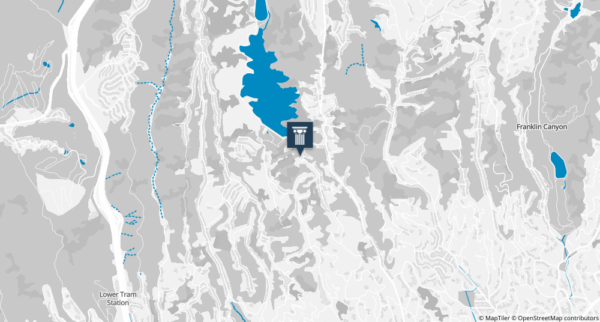
Place Details
- Craig Ellwood Associates
Designation
- Private Residence - Do Not Disturb
Property Type
- Single-Family Residential
- Los Angeles
Case Study House #16 was the first of three houses in Arts & Architecture magazine’s Case Study House program designed by Craig Ellwood, a contractor with no formal architectural training. It remains highly intact today, and is the only surviving, intact example of Ellwood’s designs for the program; his built designs for #17 and #18 have both been altered through subsequent remodelling.
Ellwood was trained as an engineer and had a passion for using industrial materials and construction techniques in residential architecture. As a result, Case Study House #16 exhibits a highly rational design and is constructed of steel, glass and concrete.
Completed in 1952, the house was innovative in its use of exposed steel structural framing, and floor-to-ceiling glass walls took advantage of spectacular views.
The one-story, flat-roofed residence was built on a flat pad in the hills of Bel-Air with magnificent views to the south and west. The layout and siting take into account the views and sun orientation, taking full advantage of both.
From the street the house presents itself as a glowing, floating glass pavilion. Translucent glass panels screen the house from the street, while frameless floor-to-ceiling glass walls in the living room merge with floors, ceilings, and a massive natural rock fireplace that extends through the glass to the covered patio.
View the National Register of Historic Places Nomination
Issues including Case Study House #16
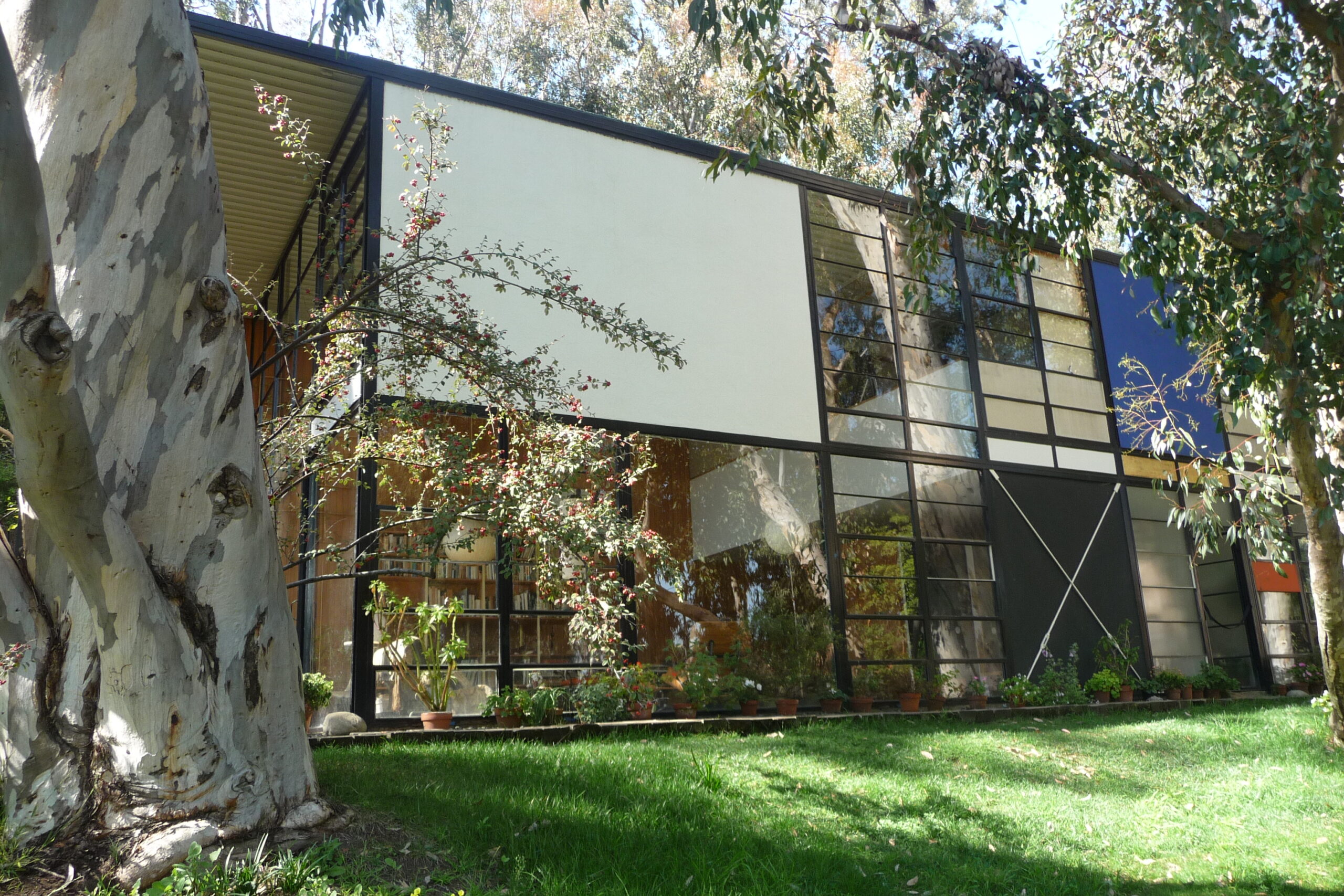
Case Study Houses
Related content.
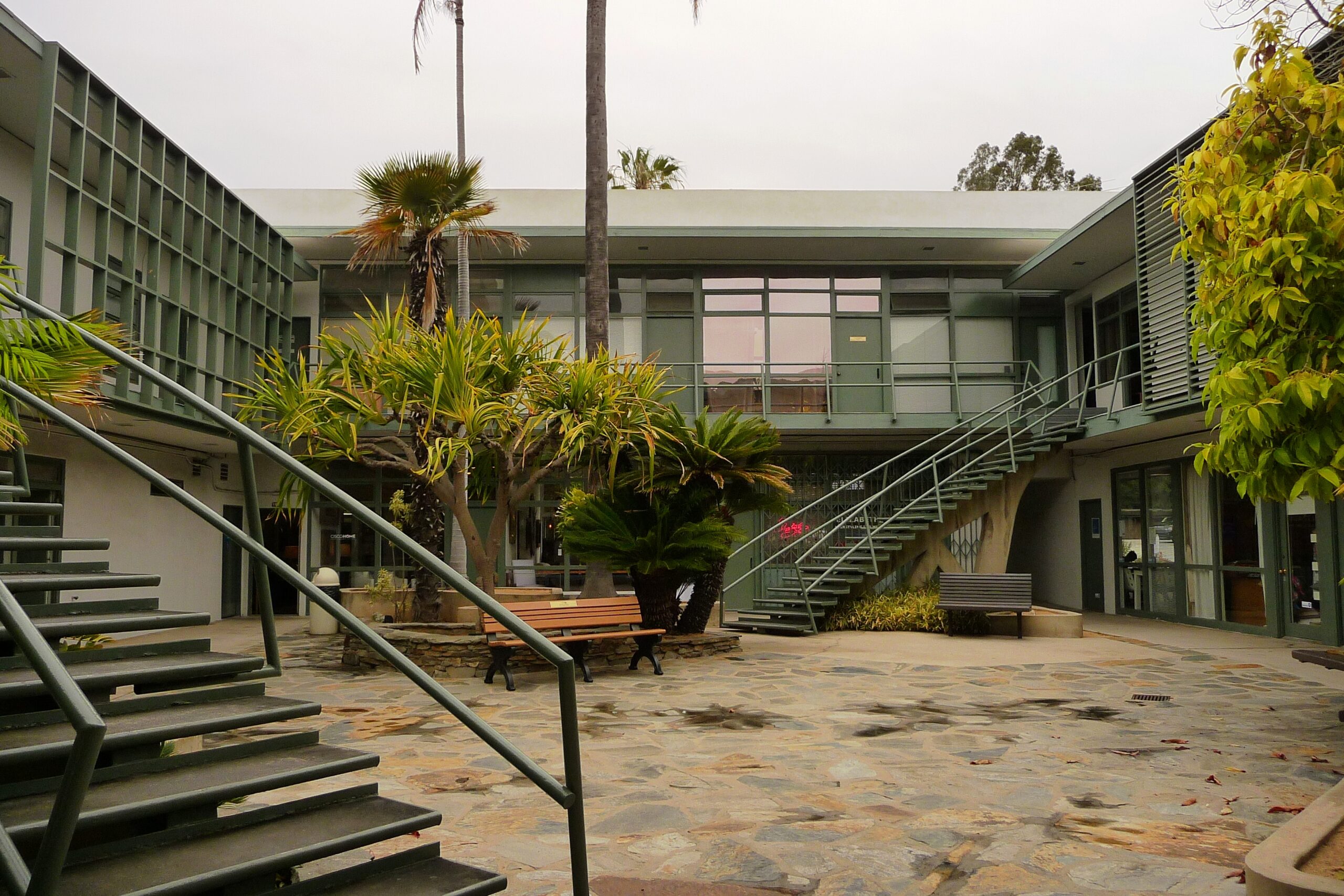
Barry Building
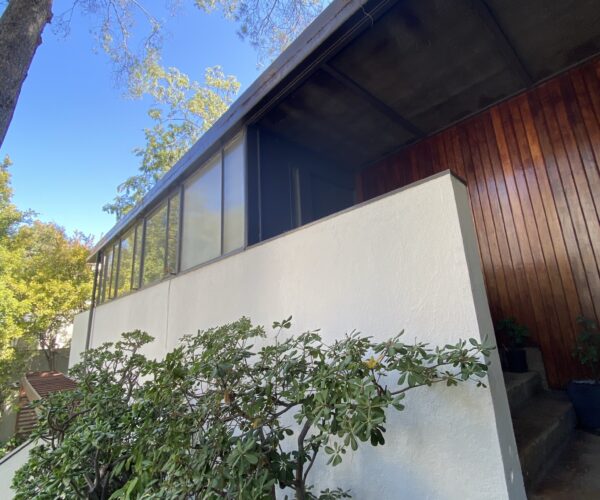
Kelton Apartments
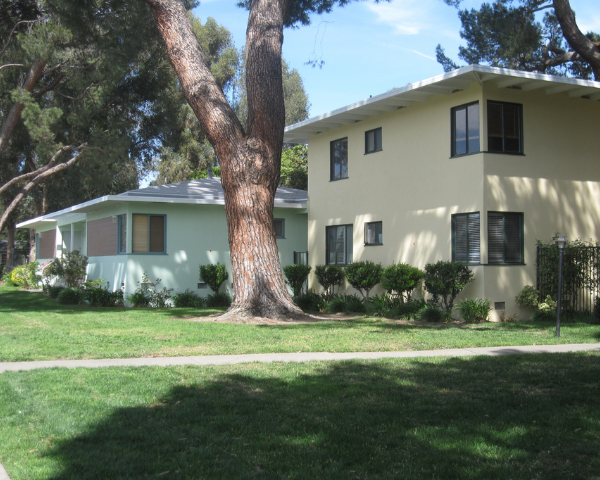
Chase Knolls

Craig Ellwood and Case Study House #16
12 mid-century listings from austin, tx to kalamazoo, mi.

In 1945, John Entenza had a bold idea. As the editor of Arts + Architecture magazine, Etenza was an early evangelist for modernism, which still enjoyed less than mainstream appeal. Seeking to demonstrate that aesthetic experimental housing could be as comfortable and affordable as traditional housing, he came up with a pretty innovative concept. Enter the Case Study program, a project offering architects the opportunity to design cost-effective prototypical homes utilizing direct discounts from building products manufacturers. All of the homes were to be featured in future issues of Arts + Architecture magazine. The program was launched in Southern California and slew of talented young architects enlisted, including Charles Eames, Eero Saarienen, Pierre Koening, Ralph Rapson and the protagonist of today’s post, Craig Ellwood.

Craig Ellwood was born Jon Nelson Burke in Clarendon, Texas. His family moved West, ultimately settling in Los Angeles. After serving in the U.S. Army Air Corps, Ellwood made his way back to L.A. where he worked in construction and general contracting. Along with his brother Cleve and two friends, Ellwood formed his first company. They named the enterprise ‘Craig Ellwood’, inspired in part by the group’s favorite liquor store, Lords and Elwood. The moniker was impactful enough that Jon Burke would go on to legally take the name for himself in 1951.

While working with his brother, Ellwood gained invaluable experience on new home builds across the Los Angeles area, becoming especially skilled as a construction cost estimator. This intimate familiarity with building materials would benefit him greatly in the next phase of his career. For over five years, Ellwood also studied structural engineering through UCLA extension night school. Although not technically an architect, Ellwood started to receive his first commissions to design private residences based on his reputation in the industry. In 1951, his new company, Craig Ellwood Design, was formed.

Just one year in and still green in his career in custom home design, Ellwood became the latest recruit of the Case Study Program. Case Study House No. 16, built in 1952, followed shortly after. It was the first of three houses Ellwood created for the Arts & Architecture magazine program. Today, house #16 is the only of the three still intact.

The Case Study House no. 16 was designed for a gorgeous hillside site in Bel Air with sweeping city views. The steel-and-glass house is enclosed with floating screens rather than floor-to-ceiling partitions, ensuring ample access to the best views. Fir frames the glass planes to create a warm contrast to the painted steel. A natural rock fireplace anchors the space, extending through glass walls onto a covered patio. The layout exemplifies the indoor-outdoor tenet of the Case Study program. Still in near original condition today, the home is currently recognized as a city landmark by the Los Angeles Conservancy.

“I was never tied to standard detailing or inhibited from trying out new methods. When you haven’t been taught that some detail is impossible, you approach it with confidence and innocence.” -Craig Ellwood
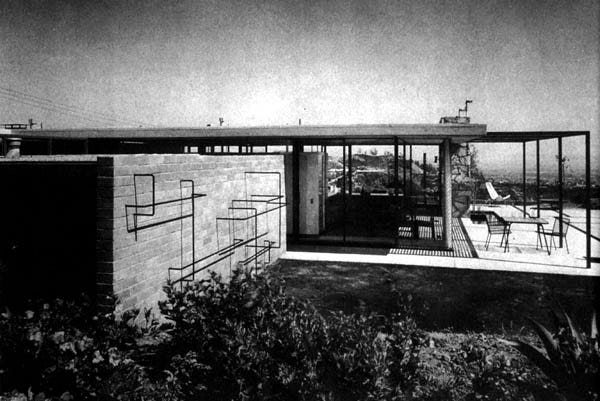
Gems For Sale This Week

33215 High Surf Ln, Warrenton, OR 97146

1814 8th Pl, Las Vegas, NV 89104

7608 Rustling Rd, Austin, TX 78731

3146 Kallin Ave, Long Beach, CA 90808 (Price Cut)

1229 Alta Paseo, Burbank, CA 91501
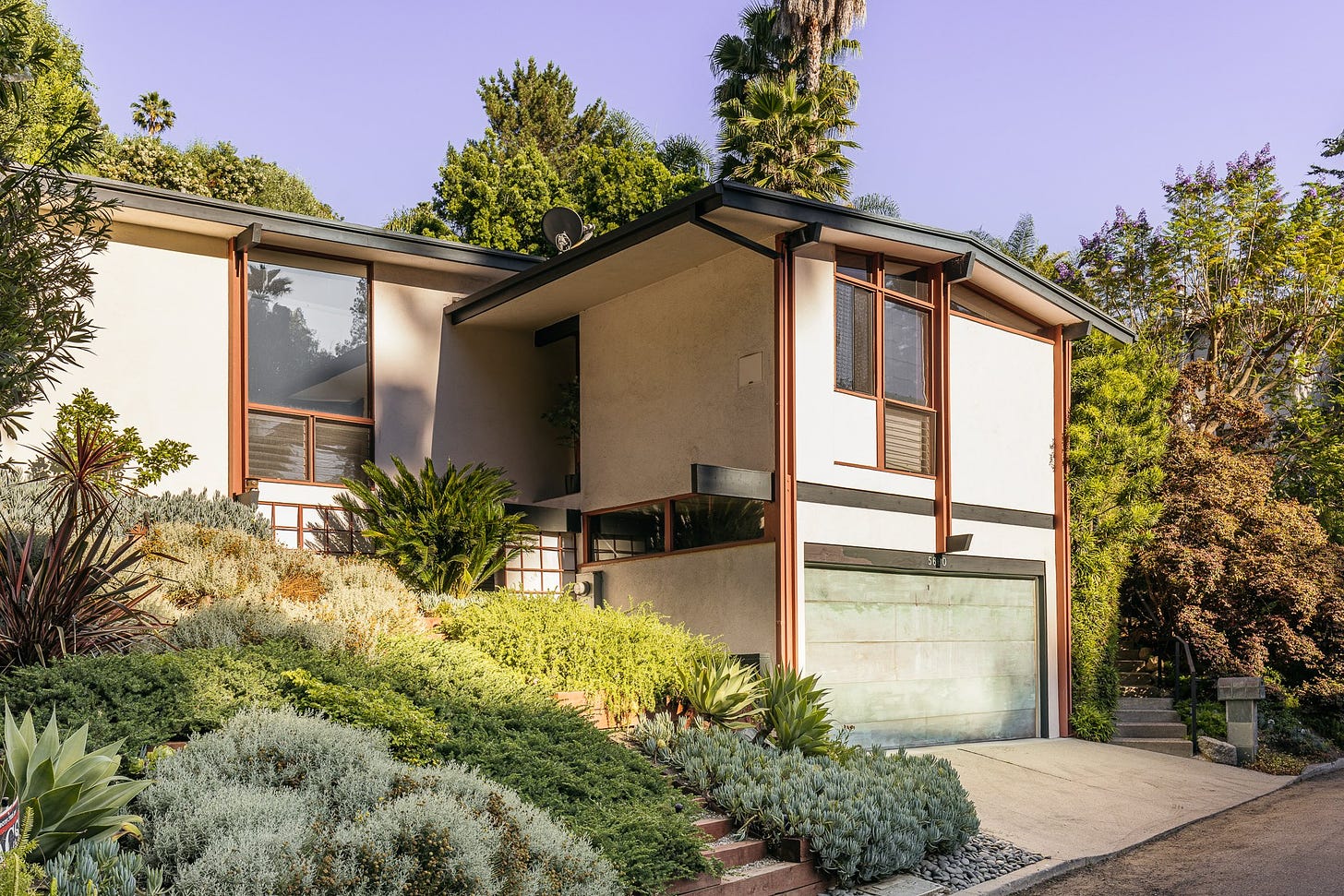
5660 Valley Oak Dr, Los Angeles, CA

1698 Marmont Ave, Los Angeles, CA 90069

30047 Mulholland Hwy, Cornell, CA 91301

1637 N Sunset Dr, Tempe, AZ 85281

240 Hillview Ave NE, Grand Rapids, MI 49503

2905 Memory Ln, Kalamazoo, MI 49006

938 Captain Shreve Dr, Shreveport, LA 71105

Discussion about this post
Ready for more?
Don't Miss
A rare Case Study jewel sells amid Bel-Air’s mansions
- Copy Link URL Copied!
In a rare transaction, a Case Study House in Bel-Air has sold for nearly $3 million after its owner, who lived in the two-bedroom property since the late 1950s, recently died.
Rarer still is Case Study House No. 16 ’s condition: pristine. For 52 years, New York transplant Muriel Norton didn’t mar or bend any of the crisply set rectilinear lines in the steel, concrete and brick structure artfully clad in glass (Norton bought the property in 1967, most likely after having rented it the previous decade).
The 1953 home remains a light-infused modernist ornament — modest at 1,664 square feet — amid Bel-Air’s mash of mansions, stone walls and pillared gates.
Rarest of all, however, is the architect who designed the modular property for his former employer, Henry Salzman. The onetime Johnnie Burke was a Texas transplant who SoCal-reinvented himself as Craig Ellwood , snatching his new moniker from L.A.’s Lords & Elwood liquor store.
Dubbed the “Cary Grant of architecture” by a business associate, the bon vivant (“He could charm the birds off the trees,” said another associate) reportedly could not draft, draw or grasp structural engineering (he tried to catch up by taking UCLA engineering extension night classes).
Ellwood’s bent for self-promotion and his visionary style — the “less is more” essential clarity of Ludwig Mies van der Rohe, fused with a jaunty L.A. aesthetic — made him dashingly famous.
Tooling around Hollywood in his red Ferrari with its VROOM license plate, the nattily dressed Ellwood was lauded by architects of the day; German modernist Konrad Wachsmann compared him to Picasso and Stravinsky.
His greatest sin, however, was failing to credit the adept architects and student draftsmen who largely realized the Ellwood brand. Those details are found in “California Modern,” a fascinating 2002 Ellwood biography by Neil Jackson.
Ellwood’s celebritized career included two other homes (now ruinously altered) for Arts & Architecture’s experimental Case Study House Program of the mid 1940s-60s, and was augmented by a second marriage to actress Gloria Henry. Ellwood married twice more, folded his firm in 1977 and retired to Italy to paint; he died in 1992.
If all that sounds like a madcap midcentury Netflix series outfitted with Mrs. Maisel-worthy costumes — you’re right, and you’re also out of luck. Television writer Kit Boss is already pitching a pilot script drawing from Ellwood’s life as detailed in Jackson’s book. Boss is a former journalist and sponsored No. 16’s Historic-Cultural Monument application, approved by the city in 2017.
Until Ellwood’s made-for-TV life hits your screen, a tour of his Bel-Air number will suffice; Compass agent Dalton Gomez recently gave an early morning showing. Along with Gomez, Aaron Kirman and Weston Littlefield of the Aaron Kirman Group at Compass hold the listing ; the sale is expected to close escrow by year’s end.
After a serpentine drive up Bel-Air Road, a wall of translucent panels that shield bedrooms appears at a crest’s bend; as dusk falls, the home appears as a luminous hilltop lantern. To the right, a low brick wall delineates the entry from the carport. More frosted panels are placed further back.
The foyer and various other walls are lined with grooved vertical Douglas fir that matches exterior siding. To the right is the boxy kitchen with white-enameled steel cabinets, its far counter overlooking the dining room. Joined, the rooms are a tidy package, save for a window’s hulking view of an adjacent three-story, six-bedroom manse listed for nearly $7 million (which includes renderings for a proposed 12,000-square-foot replacement).
Given such surroundings, the Ellwood home “is a bit of a white elephant for that pocket,” said Kirman, whose last Case Study House sale, finessed with Gomez, was in February: No. 21 for $3.26 million .
Straight ahead and to the right, the foyer opens to the vast living room, its glass walls fitted with Steelbilt sliding doors that, when opened, emit an ear-splitting screech. “They need some work,” said Gomez, opening a door framing a west-facing vista of far hills. The south elevation boasts a similar view; there, a steel pergola painted burgundy (a color used throughout) extends from the home’s fascia.
The space is made deceptively larger by wall dividers that appear to float. The panels halt a foot or more from the ceiling, allowing for open space; their black-painted bases further the illusion that there’s no floor or ceiling connection. The home’s wide overhangs also augment the space.
The living room’s Palos Verdes stone-clad fireplace continues through the glass, creating a second outdoor patio hearth anchored by three ancient eucalyptuses. A squat brick wall is fixed with climbing bars “that also act as a minimalist sculpture,” states the National Register of Historic Places registration for the home.
Besides No. 16, Ellwood created other standouts, including Malibu’s 1957 Hunt House, designed with Jerrold Lomax, as well as Pasadena’s Art Center College of Design.
Completed in 1976, the Art Center’s “bridge building” traverses an Arroyo Seco canyon. Though described as Ellwood’s swan song, his associate James Tyler, a former adjunct professor at USC School of Architecture, is now credited as the building’s principal designer.
More to Read

They turned a junk-filled L.A. yard into a weird and wonderful habitat garden
July 30, 2024

Behind the privacy hedges and block walls stand L.A.’s notable and notorious homes
July 17, 2024

How architect Frederick Fisher is helping transform L.A.’s Natural History Museum
June 4, 2024
Sign up for Essential California
The most important California stories and recommendations in your inbox every morning.
You may occasionally receive promotional content from the Los Angeles Times.
More From the Los Angeles Times

After a century, concrete plant that helped build L.A. makes way for a deluxe tower
Nov. 2, 2024

Mortgage rates are rising. Experts cite economic strength, inflation and possible Trump win
Oct. 31, 2024

Mattel is revamping its work spaces as employees return to the office
Oct. 30, 2024

The notorious Menendez murder mansion becomes a draw. Beverly Hills is reeling
Oct. 29, 2024

IMAGES
VIDEO
COMMENTS
Case Study House #16 was the first of three houses in Arts & Architecture magazine’s Case Study House program designed by Craig Ellwood, a contractor with no formal architectural training. It remains highly intact today, and is the …
CASE STUDY HOUSE #16 CRAIG ELLWOOD. MARIE MADIC – ADELINE LELEU – CASSANDRE JONGLEZ – MALIKA JOUANNETAUD – PAUL LE DIGABEL. SOMMAIRE. 1. BIOGRAPHIE DE CRAIG ELLWOOD. 2. CASE …
The Case Study House no. 16 was designed for a gorgeous hillside site in Bel Air with sweeping city views. The steel-and-glass house is enclosed with floating screens rather than floor-to-ceiling partitions, ensuring ample …
Case Study House No. 16, a striking glass-and-steel construction perched in the hills of Bel-Air, just surfaced for sale at $2.995 million.
Case Study House #16, Craig Ellwood, Los Angeles, 1952-53. The evolution of the Craig Ellwood personal image went hand in hand with the rise of his offices projects. At the peak of his powers Ellwood was as well known for his …
Located at 1811 Bel Air Road, Case Study House #16 was designed by Craig Ellwood in 1953. The residence has been meticulously maintained over the years by its two owners, and today it’s the only surviving Case Study design by …
Case Study House No. 16, a pristine example of modernist design, sells in Bel-Air for $3 million. It's the work of dashing and visionary architect Craig Ellwood.